Embibe Experts Solutions for Chapter: Atoms and Molecules, Exercise 1: Exercise
Embibe Experts Science Solutions for Exercise - Embibe Experts Solutions for Chapter: Atoms and Molecules, Exercise 1: Exercise
Attempt the practice questions on Chapter 3: Atoms and Molecules, Exercise 1: Exercise with hints and solutions to strengthen your understanding. THINK ABOVE AND BEYOND SCIENCE PRACTICE BOOKS solutions are prepared by Experienced Embibe Experts.
Questions from Embibe Experts Solutions for Chapter: Atoms and Molecules, Exercise 1: Exercise with Hints & Solutions
mole of sodium, molecules of , atom of iron, and atoms of silver were having group discussions among themselves regarding their properties. In this discussion, one of the topics was the weight of the substances. So, they started comparing their weights to each other, but they were not able to come to any conclusion. Anand, a class 10 student, was passing from there, so they decided to take Anand's help to compare their weights.
Anand has been recently taught that for finding the mass of any element or any molecules, we should first know the atomic mass and molecular mass of the elements and molecules, respectively, and the number of moles and number of molecules of given substances. With the help of Anand, a group of students came to understand the real chemistry behind the calculation of the weight of any element or molecule. So, based on the knowledge they got from Anand, they calculated the weight of each of them.
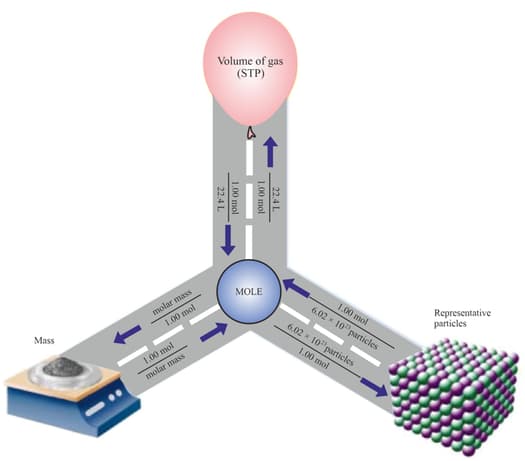
Now, can you be able to answer which of the following weighs the most?
(i) mole of sodium (ii) molecules of
(iii) atom of iron (iv) atoms of silver
(Atomic masses )
The chemical responsible for our identities is DNA, as it carries our genetic identity. Although it is a very complicated molecule, it consists of a sequence of just four different base units. The four base units of DNA are called adenine, guanine, cytosine and thymine. Adenine has the chemical formula , guanine has the formula , cytosine is and thymine is . The table below gives the masses of each type of atom.
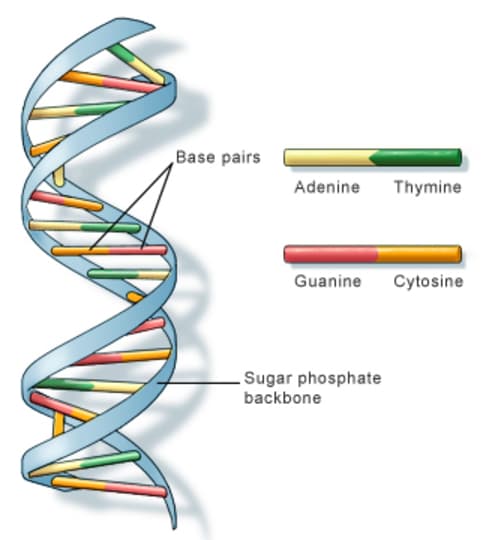
| Element | Chemical symbol | Relative atomic mass |
| hydrogen | ||
| carbon | ||
| nitrogen | ||
| oxygen | ||
| phosphorus |
- Neglecting the mass of the DNA backbone what will be the mass of the DNA with three adenine combinations and two guanine combinations.
- Calculate the number of water molecules that could be accommodated in the mass calculated in the first part.
The teacher has given one problem to Neha and Akash. She has given the formula of one compound and asked to find out the formula of another compound by using the ratio (data) of the given compound.
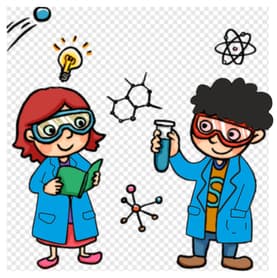
You can work out the formula of a compound from the ratio of different atoms in it. Sodium carbonate has the formula because it contains two atoms of sodium for every one atom of carbon and three atoms of Oxygen.
![Purchase Sodium carbonate anhydrous [497-19-8] online • Catalogo • Molekula Group](https://sss.embibe.com/cdn-cgi/image/q=75,f=auto,fit=scale-down/https://encrypted-tbn0.gstatic.com/images?q=tbn:ANd9GcRps4mH5Hp-oYGuD0x-3F0zltSkhUMOR1WRhZ_NkqkU2B8ZTUdLLKW_KIozSeTZ-cDLOZw&usqp=CAU)
Now teacher asked Neha and Akash to deduce the formula for the compound:
| Compound | Ratio in which the atoms are combined in it |
| Lead oxide |
of lead, of oxygen |
State whether the compound given, and the new compound will be ionic or covalent compounds?
Proust took two samples of copper carbonate - a compound of copper, carbon and oxygen. He took a sample from nature and another sample prepared in the lab and decomposed it chemically to find the percentage of copper, carbon and oxygen in the two samples.
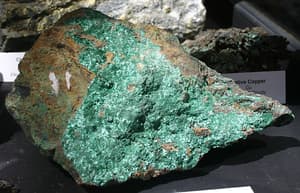
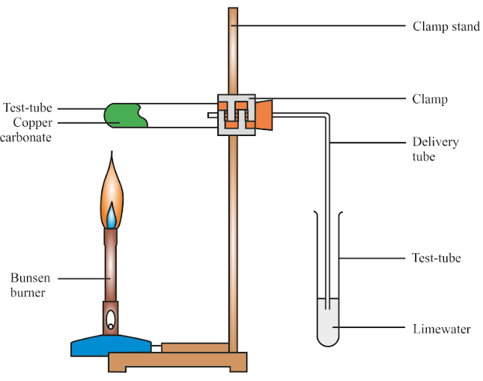
The results obtained are given in the following table.
| Element | Weight percentage | |
| Natural sample | Synthetic sample | |
| Copper | 51.35 | 51.35 |
| Carbon | 38.91 | 38.91 |
| Oxygen | 9.74 | 9.74 |
What difference do you observe in the percentage of copper, carbon and oxygen in the two samples?
Lavanya and Taashu experimented with the formation of water taking different amounts of reactants (hydrogen and oxygen).
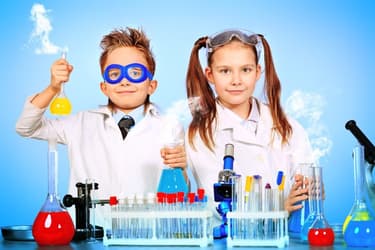
And after their experimentation, they noted their observations in the table as shown below.
| Researcher | Mass of reactants | Mass of products | |
| Hydrogen | Oxygen | Water | |
| Lavanya | |||
| Taashu | |||
- Write down the total mass of the reactants and the products in both the cases.
- What similarity did Taashu conclude after observing Lavanya's and his noted data?
- Is there any relation between the masses of the reactants they took for their experimentation?
We know that some elements combine with other elements to form various compounds. This type of combination follows law of chemical combination. Using the valency of elements we can find out the formula of the compound which they form by combining with each other.
A teacher gave a sample of an element to Rajesh and he is informed that, it forms a compound with hydrogen. Another sample of element is given to Rahul and he is informed that, it forms a compound with . They are ordered to find out the valencies of and with the help of each other. Can you help them to find the valencies of these elements?
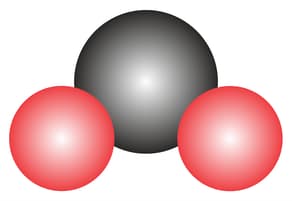

Ankita, Madhavi and Ramesh are experimenting. They took three conical flasks and named the flasks A, B and C respectively. Each of the three flasks A, B and C contain of gas at the same temperature and pressure. Flask A contains carbon dioxide, flask B contains sulphur dioxide and flask C contains nitrogen dioxide.
If flask A contains N molecules of gas, how many molecules are present in flasks B and C?
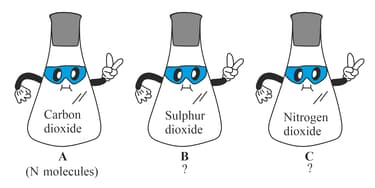
After reading the Atoms and Molecule chapter, Mohith and Raju are talking with each other. Mohith claimed that and are not the same, despite the fact that they both represent the hydrogen element, but Raju refuted his claim, claiming that there is no difference in representation. Now, please assist Mohith and Raju in determining who is accurate and discuss the reason behind the correct answer.

